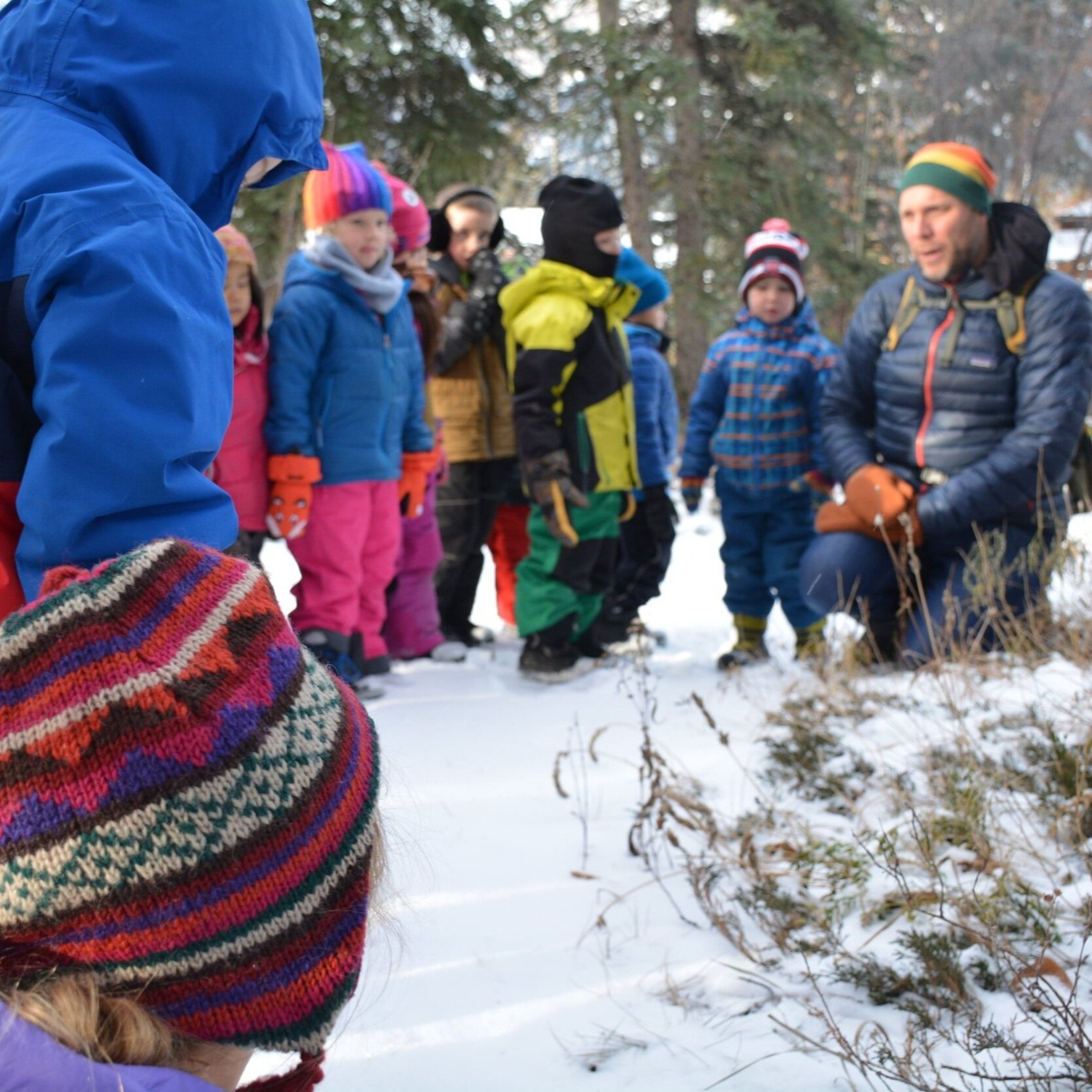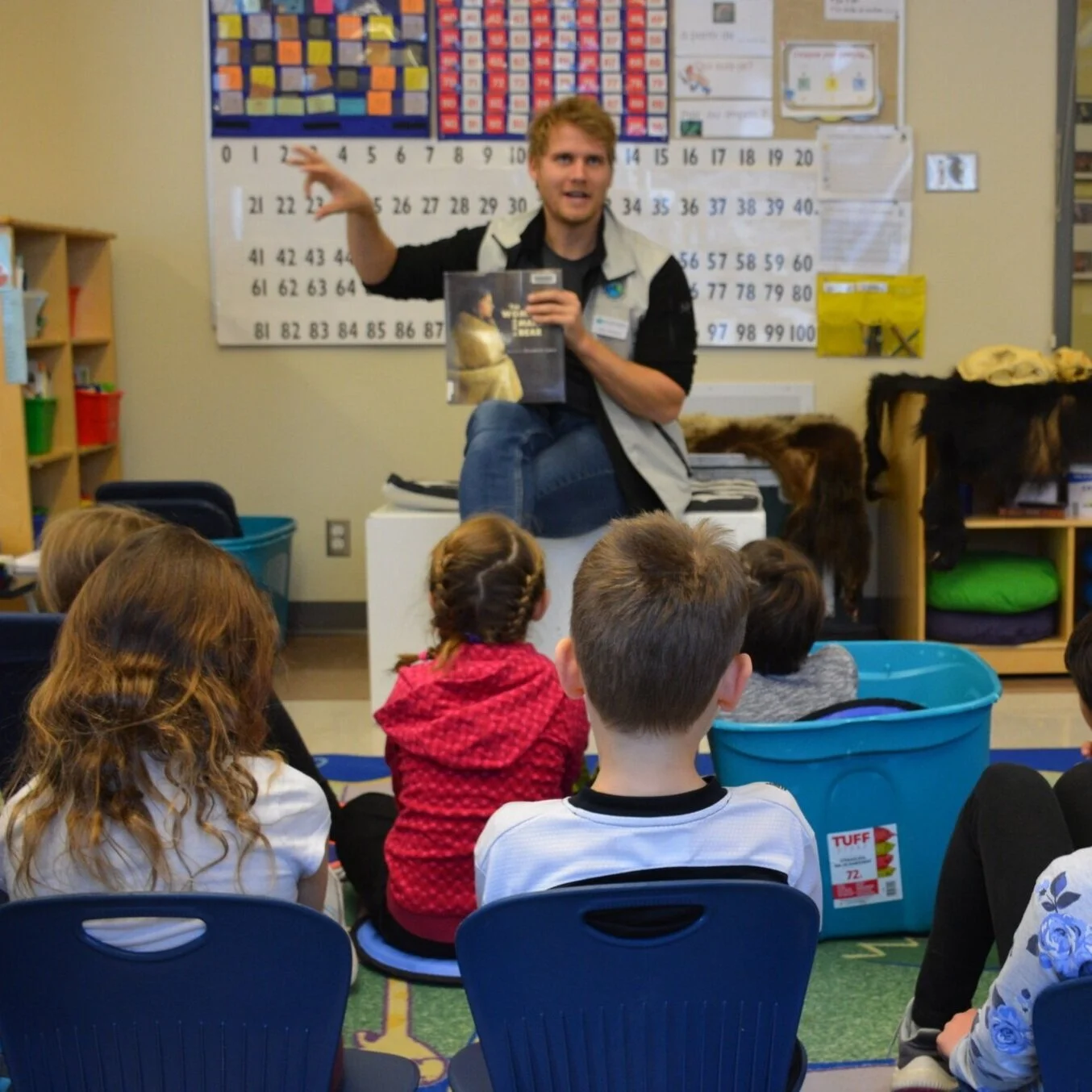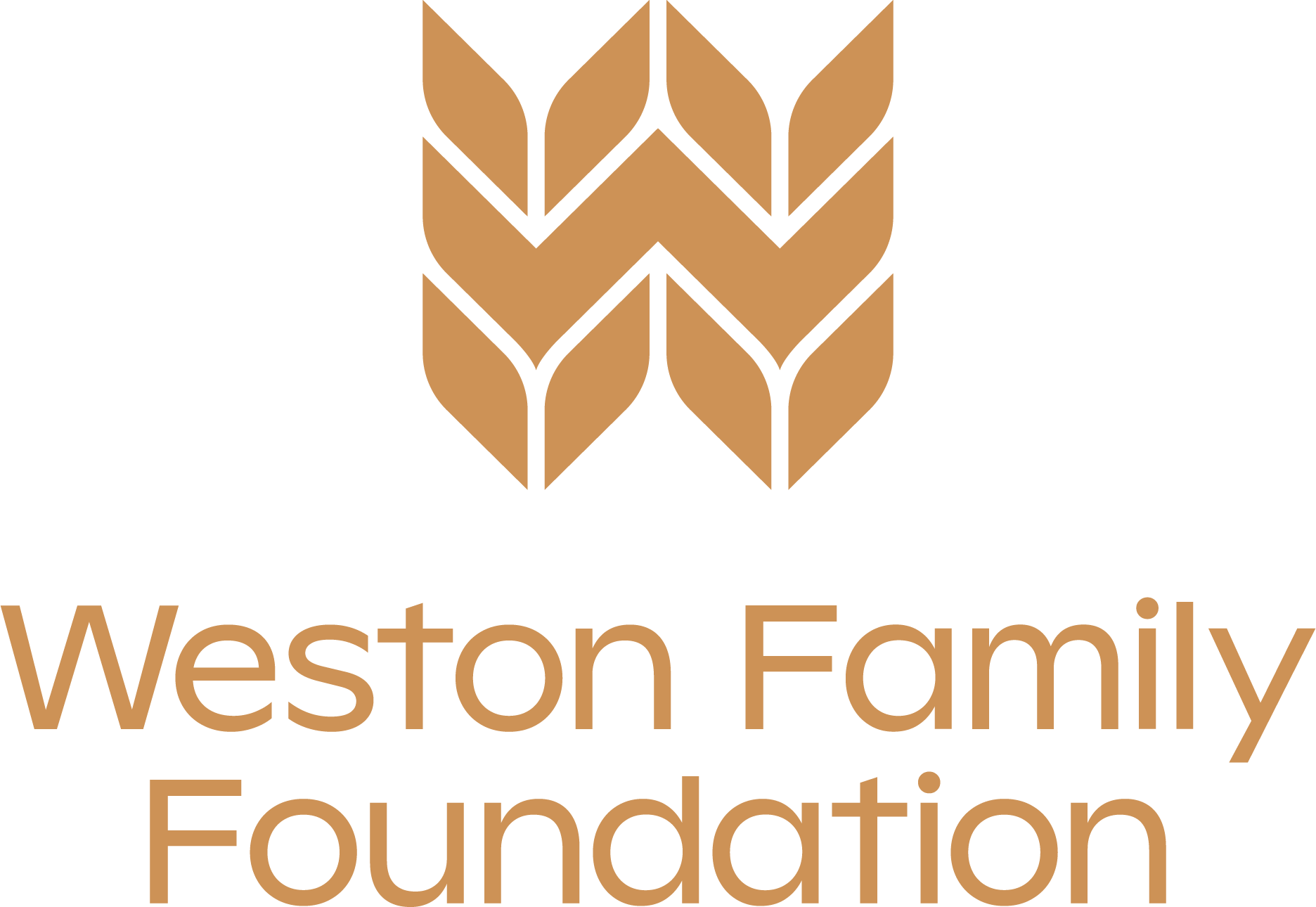conservation in the classroom
Over the past two decades, the Biosphere Institute has developed and presented wildlife ecology programs to thousands of students in the Bow Valley, using hands-on presentations, artifacts, videos, and other forms of experiential learning. Our past initiatives provide us with a solid foundation on which to build new programming that meets the evolving needs of our communities.
Human-wildlife coexistence and climate change are the key conservation challenges in the Bow Valley that the Biosphere Institute seeks to address. Through our youth education programming, we seek to increase the level of youth engagement with and understanding of conservation topics. We further seek to facilitate opportunities for community-driven learning and action that will serve as a model for conservation education in other regions around the world.
Our K-9 classroom programs draw from our curriculum-connected lesson plans and are presently offered to teachers free of charge. The list below provides an overview of the program that we offer at each grade level. Our staff are happy to adapt this programming to the needs of teachers and students, including offering program indoors or outdoors.
We are pleased to be able to offer a limited number of outdoor and online programs in Winter 2022/2023. Email us directly to make a booking today.
Kindergarten — Respecting Wildlife
Use your five senses to learn about bears through stories, activities and an interactive bear hike. Students will be introduced to the two different bear species that call the Bow Valley home and learn how to tell the difference between them. Once students are familiar with these creatures they will learn about how to make choices that keep wildlife and people safe.
Kindergarten, Environment and Community Awareness
Grade 1 — A Year in the Life of a Bear
When the temperature drops in the winter, we can put on our coats and hats. But what will the bears do?From their groggy emergence from the den in spring to the late summer berry feast, a bear’s year is full of changes. Discover how the natural world changes through the year and how bears and other animals respond to these changes, from hibernation to migration to adaptation.
Grade 1 Science, Topic B - Seasonal Changes
Grade 2 — animals, People and Stories
People around the world have been captivated by wildlife since time immemorial. This fascination has been reflected in oral and written stories. Students will explore the relationship that different people have with wildlife and how storytelling continues to be used as a way of learning about nature, wildlife, and themselves.
Grade 2 Social Studies, Topic 1 - Canada’s Dynamic Communities
grade 3 — Needs of Animals
All animals require food, water, shelter and space to survive. Wildlife in the Canadian Rockies have developed unique strategies to meet these needs, from the thick fur coats that keep them warm in the winter to the long claws that help them to dig up roots and ground squirrels. Learn about what it takes to be a bear in the Bow Valley, the challenges that bears might face, and how they overcome them.
Grade 3 Science, Topic E - Animal Life Cycles
Grade 4 — A Seasonal Balance
How are plants and animals connected to each other? How do changes in temperature and weather play into these relationships? And what could happen when the timing of these relationships changes? Students will be challenged to think about the ways that the environment changes through the year and the delicate balance that exists between interconnected plants, animals, and people.
Grade 4 Science, Topic E - Plant Growth and Changes
View Lesson Plan, Pt. 1
View Lesson Plan, Pt. 2
View Lesson Plan, Pt. 3
Grade 5 — Wildlife Management and Traditional ecological knowledge
There are multiple worldviews that contribute to our understanding, appreciation and respect for wildlife. This lesson draws on real-world examples where Indigenous and Western science have complemented one another for the conservation and preservation of the natural environment. Students will gain a greater appreciation for how oral traditions, narratives and stories are valuable sources of knowledge.
Grade 5 Social Studies, Topic 2 - Histories and Stories of Ways of Life in Canada
Grade 6 — Forests of Change
Why are wildfires important for forests and people? How has our relationship with fire changed over the past century? And how will climate change affect forest fires? Learn about the diverse roles that fires play in ecosystems, what all fires require to start and to spread, and why climate change will intensify wildfire. Students will explore ways that we can all reduce our carbon footprint to combat the effects of climate change.
Grade 6 Science, Topic E - Trees and Forests
View Lesson Plan, Pt. 1
View Lesson Plan, Pt. 2
View Lesson Plan, Pt. 3
grade 7 — recreation and conservation
Is it possible to strike a balance between wildlife conservation and humans’ wants and needs in the Bow Valley? This landscape is home to a diversity of animals and people, each with a unique set of needs and values. Students will be challenged to consider the ways that they interact with this landscape and the impacts that our activities might have on other people and wildlife.
Grade 7 Science, Unit A - Interactions and Ecosystems
View Lesson Plan, Pt. 1
View Lesson Plan, Pt. 2
View Lesson Plan, Pt. 3
Grade 8 — Glaciers and Feedback
Formed over hundreds or thousands of years, alpine glaciers provide freshwater resources for billions of people around the world for irrigation, hydro-power, ceremony and recreation. Yet today glaciers are under threat from rising global temperatures, which in turn leads to additional warming. This lesson looks at the impact that climate change is having on the world’s alpine glaciers and what this could mean for downstream users.
Grade 8 Science, Unit E - Freshwater and Saltwater Systems
View Lesson Plan, Pt. 1
View Lesson Plan, Pt. 2
View Lesson Plan, Pt. 3
grade 9 — Diversity and Fragmentation
© Adam Ford
Humans have drastically changed the landscape, as evidenced by the roads, trails and settlements that bisect our vast protected areas network. These changes have had an undeniable impact on the wildlife that call this place home, namely through habitat fragmentation. Learn about the challenges that have arisen due to fragmentation and the strategies that have been employed to address them.
Grade 9 Science, Unit A - Biological Diversity
View Lesson Plan, Pt. 1
View Lesson Plan, Pt. 2
View Lesson Plan, Pt. 3
These educational resources were made possible with the generous support from these partners:

















